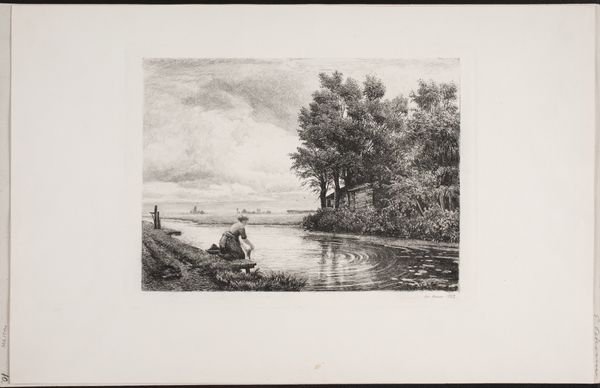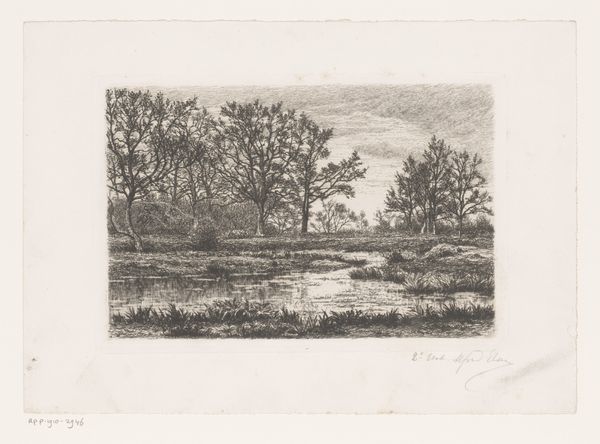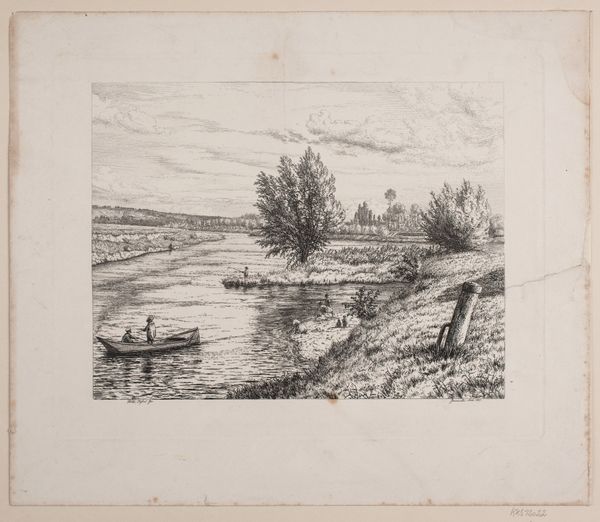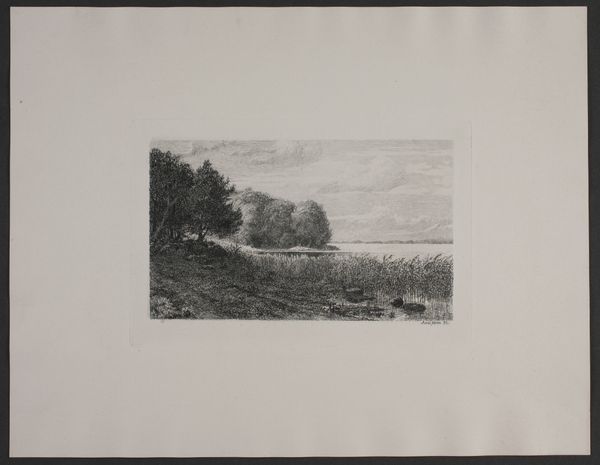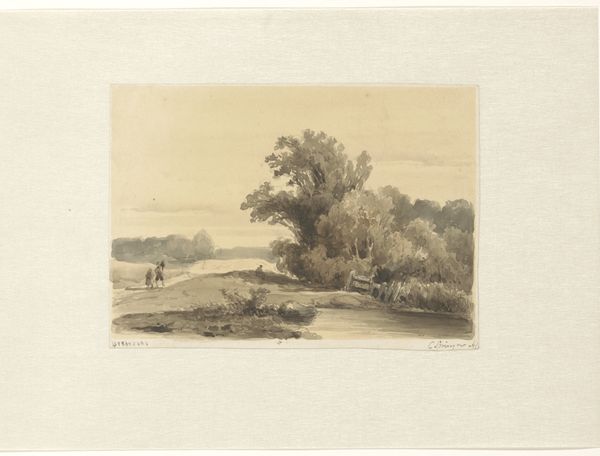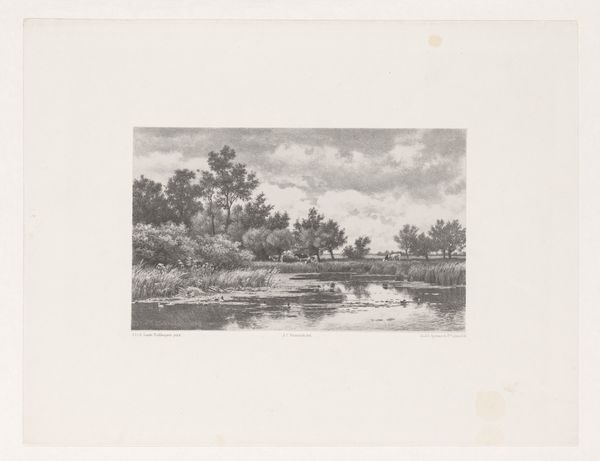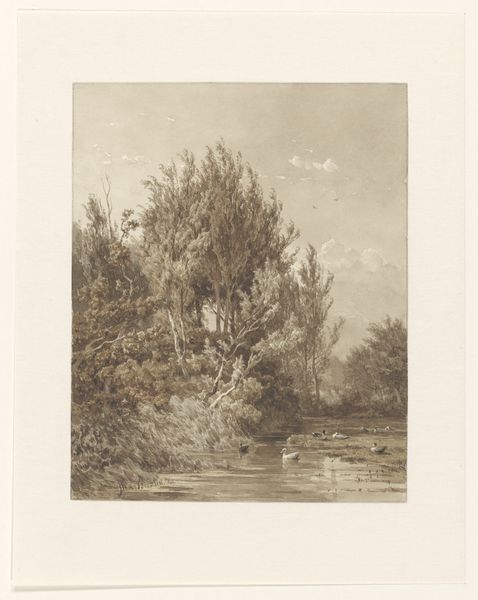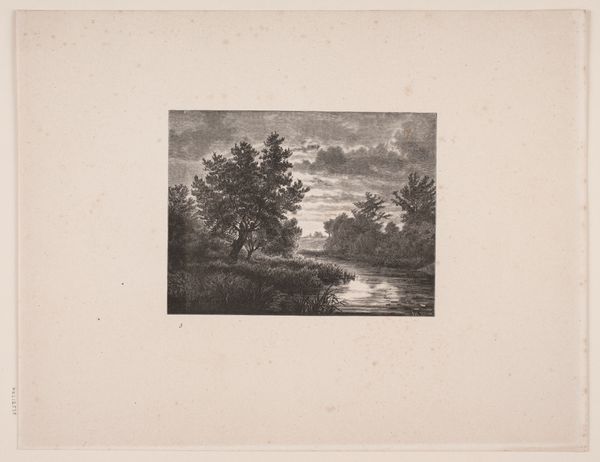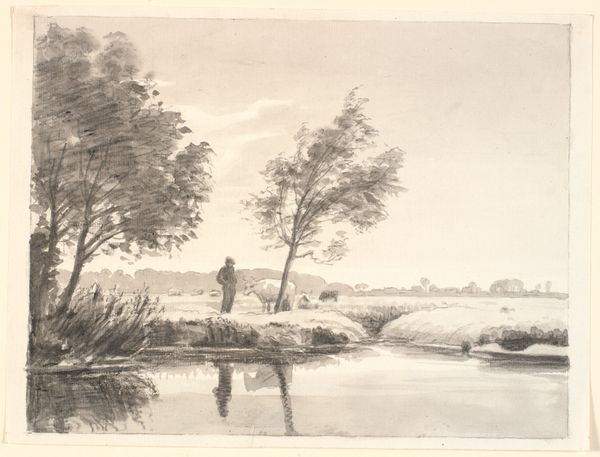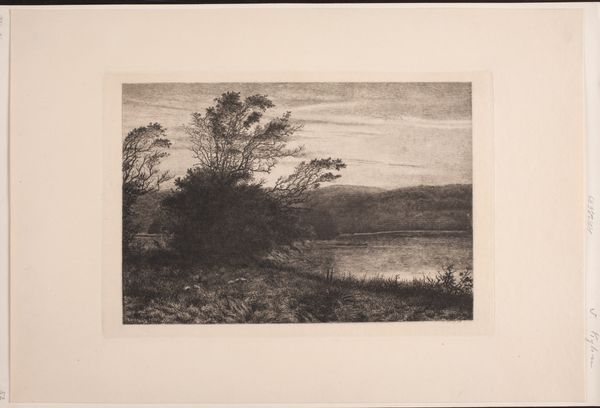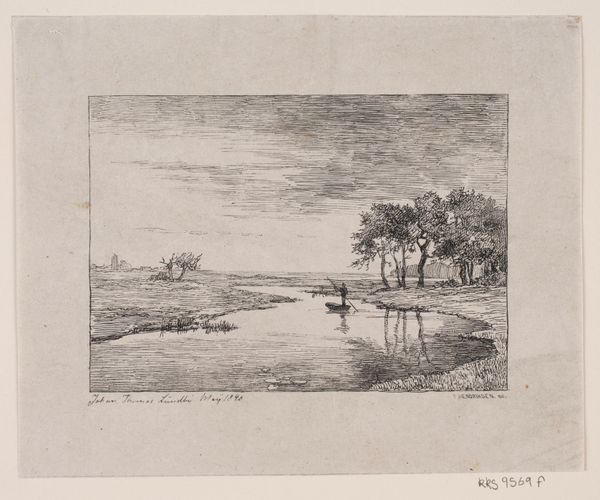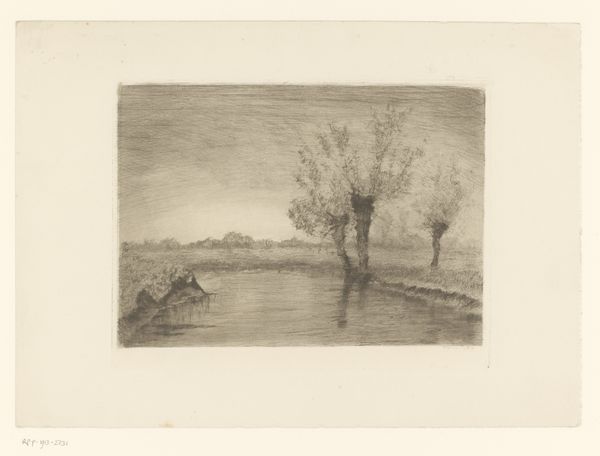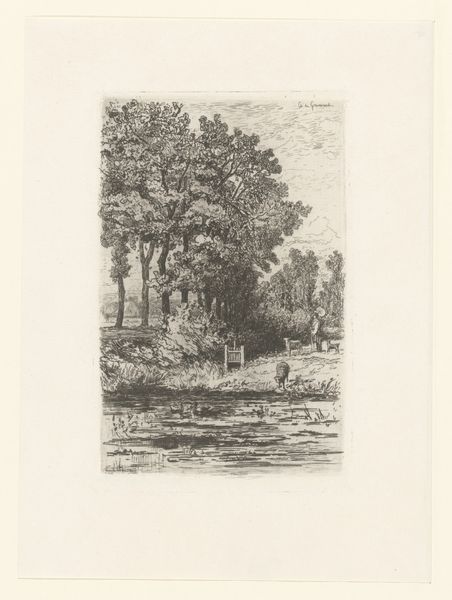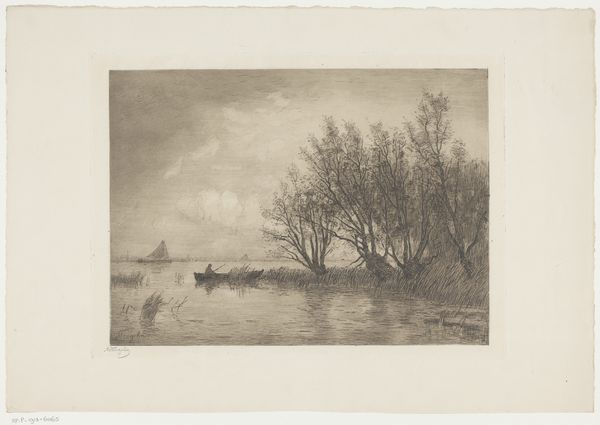
print, etching
etching
landscape
genre-painting
Dimensions: 210 mm (height) x 269 mm (width) (plademaal)
Curator: This etching, created by Edvard Petersen in 1888, is titled "Hollandsk landskab med vandløb," or "Dutch Landscape with Watercourse," currently held in the collection of the SMK, the National Gallery of Denmark. Editor: My first impression is one of quiet labor, a scene both peaceful and hinting at the routines of daily life, beautifully captured with that limited tonal range typical of etching. Curator: Indeed. We should contextualize this. The late 19th century saw increasing industrialization, and landscape art often idealized rural life as a counterpoint to the realities of urban labor. Petersen, however, presents something different, something complex. What we’re viewing is, at once, a classic pastoral subject, but through its almost photographic realism it brings forth a perspective focused on gender roles. Editor: I notice how the rings on the water, emanating from the woman’s actions, resonate outward. This central image suggests how even small, domestic tasks ripple out into the broader social fabric. Water has always symbolized cleansing and renewal, so perhaps Petersen is alluding to woman’s labor being regenerative. Curator: It's a persuasive point. Yet, by visually centering the artwork around her work, Petersen might be reinforcing rather than questioning prevailing gender roles. What appears tranquil holds embedded within it potential inequality. It's interesting to contemplate how her connection to this waterway positions her – and, historically, women in general – relative to resources, labour, and self-sufficiency. Editor: Beyond the socio-political reading, the symbolism extends further: a solitary figure positioned near the meeting point of water and land. She is a mediator of boundaries, in a traditional, symbolic, liminal position that women have embodied for ages in countless cultures, from water nymphs to lavanderas, washing in the rivers, everywhere. Curator: That brings forth fresh considerations for understanding landscape’s place and Petersen’s placement within not only his, but our present day socio-political narrative, and also the archetypical narrative through her form, expression and engagement. Thank you. Editor: A layered interpretation, a welcome, subtle shift in approach.
Comments
No comments
Be the first to comment and join the conversation on the ultimate creative platform.
